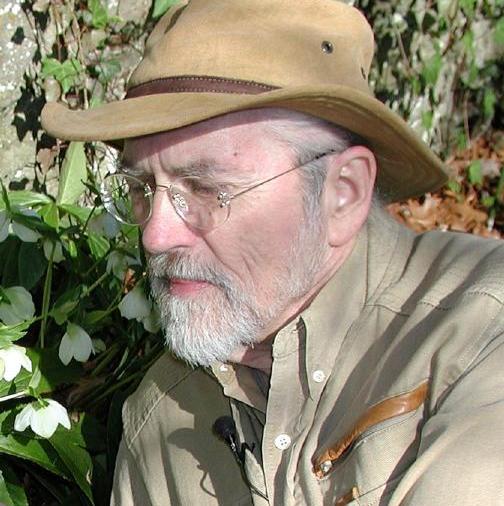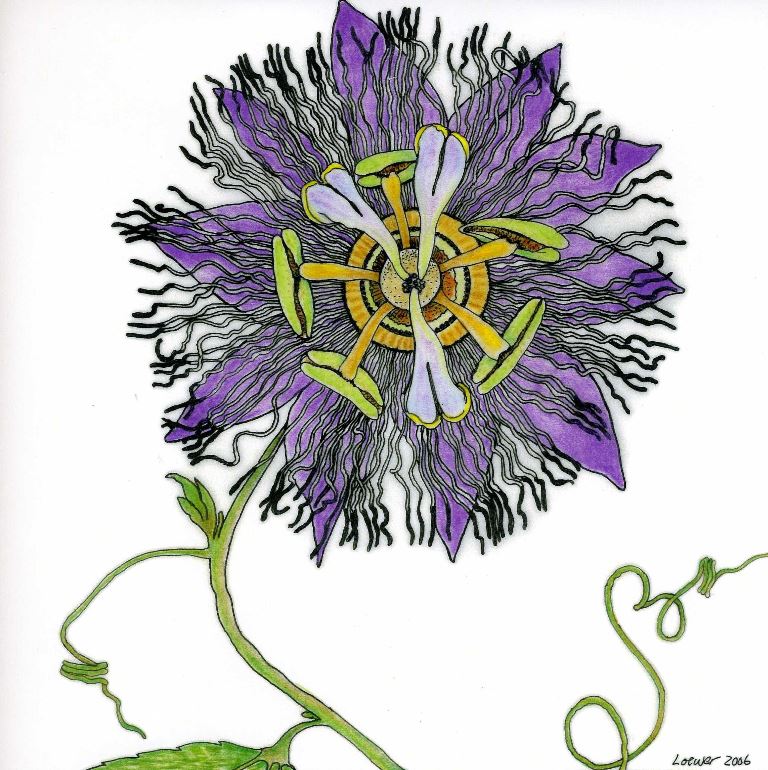Author Peter Loewer thinks you should learn as you grow

Peter Loewer has had quite a life. He was headed for a career in graphics and art after graduating college, but a computer error sent him to the United States Army as a cryptographer instead. After leaving the military in the ’60s, he finally had the chance to follow his passion and began a career in scientific and medical illustration in New York City.
Now, the Asheville-based writer, botanical artist and speaker has written more than 30 books on gardening and natural history. His 1991 book “The Wild Gardener,” was named one of the best 75 garden books of the 20th century by the American Horticultural Society, and his botanical illustrations are part of the permanent collection of the Hunt Institute for Botanical Documentation in Pittsburgh.
In his latest book, “Homegrown Gardening: Container and Fragrant Gardens,” Loewer explains not only the proper care and maintenance of container gardens and fragrant flowers, but, ever the aesthete, also delves into how they can best be designed. He chatted with us about his career, where to find the best gardening containers and why you should add aromatic blooms to your garden.
Hello Homestead: You held a number of different jobs before you started writing about gardening. How did you start gardening?
Peter Loewer: I began gardening as a small child in World War II, when everybody who could manage the time and had a place to grow veggies had a Victory Garden somewhere in the backyard. We all weeded and my mother — who loved gardens — always managed to have a few roses and the love of it stayed true with me.
HH: How has your background in graphics and art history aided in your gardening journey?
PL: One of my [degrees] was linked to Art History, [where] you soon get a chance to see — even in many old masters — just how popular beautiful gardens were, even if hidden behind castle walls for protection.
[When I moved to Manhattan after the Army], we grew all kinds of plants in our apartments, which led to my first book, “The Indoor Water Gardener’s How-To Handbook” that was a companion book to Hazel Perper’s book “The Avocado Pit-Growers How-to Handbook,” and made enough money to convince me to give up formal art and start to write and illustrate books, which, in turn, led to my running an art studio in Manhattan that dealt with scientific illustration.
HH: You have written a number of gardening books. How did you decide that you wanted the topic of your next book to be container and fragrant gardens?
PL: Sometime in the 1980s, grower interest turned to houseplants, so I wrote a number of books featuring that type of growing hobby. When we moved out to the country, with our country gardens, there were so many plants with scents, that it was obviously a great subject. The reason all my books were successful is that I continued to learn about plants, and always grew what I wrote about, plus did all the illustrations from life.
HH: For gardeners who have mostly grown edibles, what are the advantages of adding fragrant plants to their gardening projects?
PL: Sam, how could you ask this one? Obviously, when toiling with edibles, and not smoking anymore, you notice how great the dirt smells and how wonderful fresh veggies smell, then the next step is mixing in and growing scented plants!
HH: Fair enough! But how is caring for fragrant plants different from caring for edible plants?
PL: When growing plants in pots, there are rule changes but they are not complicated and whether you eat it or smell the fragrance, a pot is a pot, and the location, while very important, doesn’t stop anybody from the sheer joy of gardening.
HH: Your book features a number of different kinds of planters. Which are your favorites, and why?
PL: I have found some of the greatest containers by never going past a garage sale — especially in the country — and looking for jazzy containers. I truly have no favorites because each one in the garden has a touch of the right color or an interesting shape so that it entertains both the eye and the heart.
HH: What advice would you give gardeners intimidated by the design element of ornamental gardening?
PL: Learn as you grow — and if you like something that you fear might be gauche, remember that very few people, especially those who know a lot, are usually unkind. The problems in life come from people who know little or nothing and try to make up for it with blather and nonsense.
HH: What should gardeners consider when starting a container garden?
PL: Whatever plant you pick, it will need a pot, so remember that concrete pots can be heavy, not to mention a two-gallon terracotta pot filled with soil. So if you have trouble, always ask for a helping hand. You’ll also find that making wooden trays and adding casters on the bottom makes it easy to move big pots.
HH: Personally, what is your favorite fragrant flower?
PL: My favorite smelling flowering plant is the heliotrope, and many narcissus are not to be ignored.
HH: Your new book has a whole section about roses. Why did these flowers merit a separate section?
PL: Sam, grow one Bourbon Rose in a pot or in the border or in the garden, then on a warm spring day, pick new blossoms for your table — and inhale and wonder at the beauty of life!
HH: Do you have any ideas for the topic of your next book?
PL: I am thinking about doing a book devoted to mysterious flowers, whether from scent [or] general design, that get the imagination fired up!

This Q&A has been edited for clarity and length.
